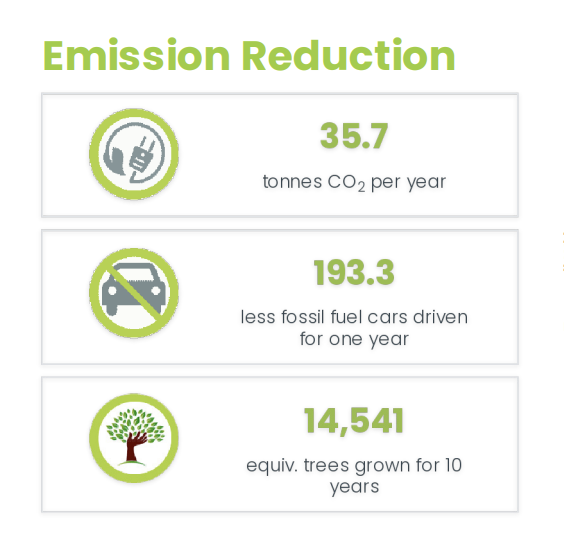For the experienced sales manager, you’re all too familiar with the uphill battle of convincing potential customers to invest in a solar and battery system. Countless objections are thrown your way, ranging from the fear of relying on renewable energy, the perceived high costs of solar and batteries and the familiarity of grid electricity. How do you, as a sales professional, navigate this minefield of objections to close the sale? The answer, surprisingly, might not be another sales technique, but the effective use of data.
Return on investment
As much as we wish everyones’ motivation for moving to solar was to reduce greenhouse gases, more often than not the customer is seeking to remove themselves from being at the mercy of constantly rising energy costs. The key to success here lies in demonstrating, with concrete financial data, how a decision to adopt solar energy can provide significant savings over time.

There are two different sets of data to sell here. Short term: first year and per bill returns, and long term: payback time and returns over the lifetime of the system, comparable to any good investment.
To achieve this, the SolarPlus system calculates the financial savings that the user may be entitled to after installation, based on the energy tariffs and the consumption profiles selected, or uploaded for greater accuracy, as part of the sales process.
The platform also utilises key information such as the feed-in tariff and peak electricity charges to determine the individual variations in prices for peak, shoulder and off-peak time frames in the energy consumption cycles. In addition, SolarPlus also determines the financial benefits that the user might be entitled to, through solar exports, incentives, and tariffs.

When these cost saving and financial incentives are mapped across the year, it’s possible to demonstrate the lifetime return on investment to the customer. For SolarPlus this means comparing a projection of expected electricity costs with the accumulated savings after the customer makes the investment.
As every sales rep in the industry knows, enquires about battery storage are becoming more common, and it’s important that this is also included in the financial modelling presented to the customer. In SolarPlus, battery energy costs relate to the cost of energy supplied by the battery module, calculated using the price of the battery, the cost of the avoided grid energy, and the price of the feed-in tariff that may have been foregone in order to charge the battery.
In other words there is a full hour by hour simulation of the energy performance so that you, and your customer, have maximum peace of mind that the payback expectations you’re creating are based on good data.
Increase in property value
A 2022 ‘Sustainability in Property’ report from Domain found that houses boasting energy efficiency go for a hefty premium – up to $125,000 more on average. And it’s not just houses, even apartments are getting in on the action, raking in an extra $72,750.
The report also unveiled sustainable properties attract on average 8.7 per cent more buyers to a listing and an additional 5.5 per cent for apartments when compared to the standard dwelling.
These are the sort of stats that are well worth having in your back pocket when talking with a residential investor who may have a shorter time-frame to financially benefit from a new system.
Energy Independence
One of the most significant selling points for a solar and battery system is the concept of energy independence. By illustrating how a customer’s energy usage aligns with solar production and battery storage, you can demonstrate how they can become less reliant on the grid.
In order to evaluate the performance and energy yield of a system, SolarPlus takes solar data from within 10 km of the site location and simulates a typical year of operation. This way, the software is able to provide the most accurate statistics needed to forecast the energy available to meet the user’s energy needs and to charge their battery.
For customers who are considering battery storage, the SolarPlus Performance Engine models battery charge and discharge, and charts demonstrate the differences in peak demand across each month of the year with various system and configurations. Consumption patterns in comparison with solar and solar and storage, provide valuable information to users to model their systems, to enhance both monetary and environmental savings, as well as the additional peace of mind with a backup power system.
Environmental benefits
 Finally, we arrive at the environmental benefits that come with installing a solar and battery system. Even though we have left it last, the fact that solar power does not produce greenhouse gases or other pollutants, unlike fossil fuels,natural gas, is still a very important consideration for new prospects.
Finally, we arrive at the environmental benefits that come with installing a solar and battery system. Even though we have left it last, the fact that solar power does not produce greenhouse gases or other pollutants, unlike fossil fuels,natural gas, is still a very important consideration for new prospects.
For our SolarPlus reporting, once a tally of grid supply kWh reduction is tallied over the lifetime of the system, factoring panel degradation, this is multiplied by a carbon emissions multiplier provided for each state (published by Dept of Industry, Science, Energy & Resources) and divided by the lifetime in years for the average value. For NZ – the rate is 0.131 kg CO2/kWh * kWh grid reduction averaged over the lifetime of the system.
To further illustrate the positive benefits on the environment, SolarPlus utilises the same carbon emission data and compares it to other easily relatable elements such as the equivalent number of cars the proposed system would remove from the road, or the number of trees that would need to be planted in order to achieve the same reduction of emissions.
Let the data do the selling
By providing your customers with clear, accurate, and relevant data that supports the value proposition of your solar and battery systems, you are assisting them to make the right decision for this own circumstance in a completely objective and transparent way.
At the end of the day, good data doesn’t just overcome objections, it prevents them. By understanding your customer’s needs and using data to demonstrate the value, you can let the system sell itself. And who wouldn’t want that?


